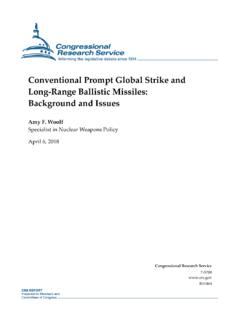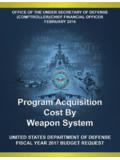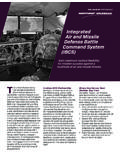Transcription of Pacific Life Research Center - PLRC
1 US TRIDENT SUBMARINE LAYOUTS ource: US NavyPLRC Pacific life Research Center631 Kiely Boulevard * Santa Clara, CA 95051 * Phone 408/248-1815 * Fax 408/985-9716 * E-mail This paper is current only to 16 November TRIDENT SUBMARINE & missile SYSTEM:THE ULTIMATE FIRST-STRIKE WEAPONC ompiled by Bob AldridgeIn 1967 the US Department of Defense engaged the Institute for Defense Analysis tostudy all options for modernizing the strategic triad of nuclear forces -- silo-based intercontinentalballistic missiles, bombers and bomber-launched nuclear weapons, and the submarine-launchedballistic missiles (SLBMs). In 1968 the Underwater Long-range missile System (ULMS) emergedas the modification for the sea leg of the triad. ULMS was later called TRIDENT TRIDENT US currently has 18 Trident submarines but four will be retired from strategic servicesoon. All carry Trident submarine-launched ballistic missiles (SLBMs).
2 Trident submarines aredesignated by the letters SSBN, followed by the serial number -- the SS indicates a submarine, the B tells that it carries ballistic missiles, and the N means it is nuclear was started in 1976 on the USS Ohio, lead ship in the new Trident fleet. Thesesubmarines carry 24 missiles each and normally operate on a 100-day cycle -- 70 on patrol and 30 inport for resupply and refit. Blue and gold crews alternate on the patrol cycles. By mid-1997 the finaltotal of 18 US Trident submarines became operational. Appendix-A lists the 18 US Tridentsubmarines and Appendix-B presents the US Trident submarine Lockheed Martin publication states that the submarine service life has been extended to 44 years. Nuclear Notebook in the May/June issue of Bulletin of the Atomic Scientists also states the service life has beenextended to 44 years. The 44-year service life figure may have derived from two of the submarines going throughtwo 2-year stints in the shipyard -- one for the D-5 backfit and another for nuclear refueling.
3 This will bediscussed later in this eight oldest Trident subs have been based in the Pacific with their home port at Bangor,Washington, and originally carried Trident-1 (C-4) missiles. It is four of these oldest subs that willbe retired from strategic service, possibly to be converted to cruise missile launch platforms. Theother four are being retrofitted to carry the larger Trident-2 (D-5) missiles. In addition, twosubmarines already outfitted with Trident-2 missiles have been transferred from Kings Bay (seebelow) to Bangor. This will result in a total of six submarines at Bangor, all equipped with newest ten were originally based in the Atlantic with their home port at Kings Bay,Georgia. They were all equipped with Trident-2 (D-5) missiles from the time of their of these subs have been transferred to Bangor on the west coast to compensate for the subsbeing removed from strategic service.
4 That leaves eight Trident submarines left at Kings early 1998 the service life of all Trident submarines was extended from 30 years to 42 years-- two 20-year service periods with a 2-year-long Engineered Refueling Overhaul (ERO) in However, a 4-month-long Extended Refit Period (ERP), in addition to the normal35-day-long refits between patrols, is still considered necessary to perform once during each 20-yearservice stint. All of this is shown Trident submarines are based at two locations -- Sub-Base Bangor in Washington stateon the west coast, and Sub-Base Kings Bay in southern Georgia on the east Bangor on the Hood Canal was the first Trident home port established. It is locatedin Kitsap County across Puget Sound from Seattle. Submarine access to the base is from the PacificOcean through the Strait of Juan de Fuca and down the Hood Canal. The first Trident submarine,USS Ohio, arrived at Sub-Base Bangor on 12 August 1982.
5 Appendix-C provides a map of Kings Bay, the east-coast home port for US Tridents, is on the Cumberland Sound-- in Camden County of Georgia, a short distance from the town of St. Marys. Submarine access tothe base is from the Atlantic Ocean through Cumberland Sound. The first submarine at this base wasthe USS Tennessee which arrived on 15 January 1989. Appendix-D provides a map of Sub-BaseKings service service cycle 14 years | 6 yrs ||| ERP ERP 4 mos 4 mosLife Cycle of Trident SSBN(Source: Final Report, p. 1-3)The specific point at which the ERP occurs duringthe second 20-year cycle has not been determined2 Analysis of Converting Trident-Class ballistic missile Submarines (SSBNs) to Nuclear-Powered Guided- missile Submarines (SSGNs), p. 3 of PLRC-011117 EXTENDED SSBN s presence has or will spread to the southwest Pacific and Indian Oceans.
6 Theadditional ocean area in which the submarine can operate has always been the paramount justificationfor the Trident system. Covering more of the globe has become even more compelling with thestrategic policy now leaning toward regional wars and nuclear expeditionary forces. But whenpatrolling off the Bay of Bengal or the Arabian Sea in crisis times, for instance, the Navy certainlywouldn t want to send the submarine all the way back to Bangor, Washington for periodic resupplyand refit. There would have to be means of forward missiles do allow the sub to be on-station as soon as it leaves port, but fullflexibility is not achieved if the submarine is always at arms reach. So common sense tells us that thesub isn t going to hang around its own doorstep. We don t even have to rely on common sensebecause naval exercises point to the same conclusion. In a program called SSBN Continuity OfOperation Program (SCOOP), various Trident subs have been refitted at remote locations.
7 In May1986 the USS Georgia went through a nine-day full refit at refit of the USS Georgia took place at Guam in February 1987, to work out someproblems encountered during the previous exercise. Following that, the USS Nevada was turnedaround at Sitka, Alaska. In July 1989 the USS Alabama went through refit at Astoria, Oregon. RearAdmiral George W. Davis, former commander of Sub-Base Bangor, said that changing crews,replenishing supplies, and performing needed repairs could be done in Mexico. Trident subsunderway in the open ocean have reloaded torpedoes from tender ships and taken on supplies fromhelicopters and supply submarines have visited other ports. TV news on 7 August 1995 showed the USSM ichigan in San Francisco Bay . The USS Henry M. Jackson also visited San Francisco Bay duringFleet Week in October 1995. SCOOP operations can take place alongside any ship or at any wharf,as long as missiles are not has now been revealed that three-day-long SCOOP operations have been practicedextensively during the cold war under the heading of Extended SSBN Rather than thenormal 77-day patrols interspaced with 35-day refits, every other refit is replaced by a 3-day crewexchange and replenishment at a remote TRIDENT TRIDENT Trident missiles have important advantages over ICBMs.
8 They can reachtheir targets in 10-15 minutes as compared to 30 minutes for an ICBM. They can approach thosetargets from all directions from unknown launch points, as opposed to only over the north pole forICBMs launched from fixed silos of known & targeted locations. Those advantages would confusedetection and greatly enhance the element of surprise which is needed for a first strike. On top ofthat, Trident missiles hold enough warheads to provide a first-strike force all by themselves, againstany adversary, while remaining invulnerable to a sneak attack. Trident missiles, supported by extremelow frequency (ELF) submarine communications and NAVSTAR Global Positioning System (GPS)satellite navigation corrections, make ICBMs Trident subs do not carry the same type of missile . The eight oldest in the Pacificoriginally carried the Trident-1 ( C-4) missiles. The Bangor base was originally only equipped toservice and maintain submarines carrying Trident-1 missiles.
9 Meanwhile, the ten newest Trident subs3 The terms reentry vehicle and reentry body are used 4 of PLRC 011117 Trident-1 (C-4) MissileSource: US Navyoriginally in the Atlantic are loaded with longer range and moredeadly Trident-2 (D-5) missiles. Kings Bay is equipped to handlesubmarines carrying Trident-2 missile -- either C-4 or D-5 -- carries up to eightwarheads. D-5 missiles were first intended to carry the 475-kilotonW88 warheads encased in Mark-5 reentry But less than400 of these warheads were manufactured (some sources say thenumber is 384). These are distributed among several submarinesbut not mixed with other warheads on the same missile . Most ofthe warheads carried on Trident-2 missiles are the same as thosecarried on Trident-1 -- that is, 100-kiloton W76 warheads encasedin Mark-4 reentry (C-4)Trident-1 missiles, also known as C-4, would be key playersin a first-strike capability.
10 They are now fully operational with some168 missiles deployed in the Pacific in 7 Trident submarines. Fiscalyear 1984 was the last year Trident-1 missiles were ordered, and thetotal number procured is 570. Fiscal year 1989 was the last yearfunds were requested for the Trident-1 C-4 missile can carry eight 100-kiloton Mark-4/W76multiple independently-targeted reentry vehicles (MIRVs). To comply with START-1 Treatyrequirements, the number of warheads on each C-4 has been downloaded to 6. That adds up to 1,008warheads poised to strike. Even missiles on submarines in port could reach their targets. Appendix-Eprovides the Trident-1 (C-4) missile missiles are not precise enough, and the Mark-4/W76 warheads not powerful enough,to destroy sufficient silos for a first strike without outside navigation aid. With its one-dimensionalstellar inertial guidance (SIG) system the missile follows a single star as a guide toward its system of updating the inertial navigation package provides an accuracy of about 750 feet.





